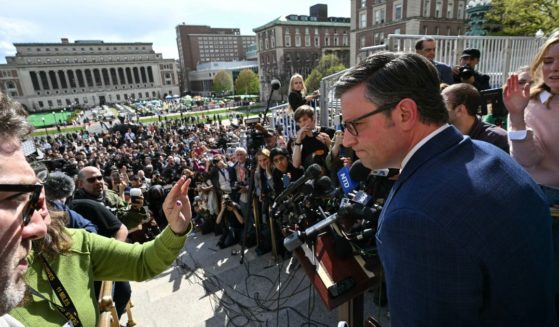Bob Ehrlich: Here We Go Again
It’s getting to be that time of year in the Ehrlich household. It’s “Christmas in July,” otherwise known as the beginning of the football season.
Pro, college, high school and youth preseason practices will soon begin. For our family, it means the older son will be off to college two-a-day practices, while the younger son will be following a similar schedule at our local high school. Such scenarios are taking place in a million other American families.
You might be struck by that 1 million figure, but it is the estimated number of high school football players in the country. Approximately 7% of these players will go on to play college ball at the Division I, II or III levels. All of which means there will be well over 1 million American families participating in our most popular sport this fall.
Of course, numerous headwinds continue to plague the game, most primarily the ongoing concussion/chronic traumatic encephalopathy debate. Here, despite annual rules changes meant to make a violent game safer, more families are asking whether the well-known rewards of the sport are worth the (long-term) price.
I find myself involved in many such discussions given my profile as both a former politician and former college football player. A majority of these conversations are initiated by middle- and upper-middle-class parents, particularly mothers, who wish to engage on why they should allow their sons to play such a risky sport when so many other athletic options are available.
Note that my class description is purposeful; I have found most poor and working-class parents continue to see football through an upward mobility/opportunity lens. They accordingly have fewer qualms about their sons’ continued participation in the sport.
Still, as America celebrates the 150th anniversary of the birth of college football (first game: Rutgers vs. Princeton, 1869), more families than ever find themselves at a cultural crossroads. For those of you who are truly undecided, I submit the following thoughts for your consideration.
• Not every kid should participate in this sport.
Whenever I find myself confronted with a mom who tells me her son is not allowed to play, I ask two questions:
(1.) “Does he want to play?”
(2.) “Does he have the physical build that would allow him to play?”
If the answer to both queries is “no” — no problem. Parents should never force a kid to play any sport. Similarly, underweight boys may experience great frustration when exposed to repeated physical contact, despite weight limitations imposed on youth leagues (ages 7 through 10).
The problem occurs when the answer to both questions is “yes” — but the parents remain adamant in their opposition. Here I tend to tread lightly but nevertheless ask if the parents understand the potential and long-lasting resentment that could be building in their son.
• Football is not a sport wherein parents/coaches can simply “help out.”
Many youth leagues now require some degree of training for their football coaches. Such is a positive development, as proper technique is essential in preventing unnecessary injury. This is one sport wherein well-meaning but fundamentally deficient parents represent a danger to the players. The NFL’s “Heads Up” teaching partnership is a welcome addition in this regard.
• Other contact sports are dangerous, too.
Numerous studies have shown how participation in other physically challenging sports can be as dangerous as football. Boys’ ice hockey and lacrosse as well as girls’ soccer and lacrosse have concussion rates equal to or greater than football, according to those who quantify such things. Why then single out a sport that has been aggressively attempting to make itself safer from the sandlot to the professional ranks?
• Does football’s violent nature contribute to toxic masculinity, bullying, etc.?
This is, of course, a political shot from the uber left. You may recognize them as the haters who have brought us such silly constructs as speech codes, safe zones and trigger warnings. Although the foregoing are academic in nature, they nevertheless represent a dangerous move to soften young minds and spirits. These and other made-up constructs are all about arranging life in a nonconfrontational, non-engaged manner — sometimes employing therapy puppies and cookies for those unable to handle disquieting news or difficult challenges (such as the election of one Donald J. Trump).
The mentally and physically challenging nature of football (and other contact sports) stands in striking contrast. Contact sports are not comfortable. They are often demanding and painful — yet teach discipline, character, teamwork and competition — all positive attributes that help young people adjust well after the cleats are put away.
For those of you who are still undecided about what to do with your young athlete, I highly recommend “1st and Forever: Making a Case for the Future of Football.” This excellent book relates the personal journeys of young men whose lives were changed in often dramatic ways through their experiences on the gridiron (yours truly included).
At the very least, it will leave you with a deeper appreciation as to how the game helps turn boys into productive men, notwithstanding the caricatures of “toxic males” so often alleged by activists in their campaign to destroy the sport as we know it.
Let the season begin!
The views expressed in this opinion article are those of their author and are not necessarily either shared or endorsed by the owners of this website. If you are interested in contributing an Op-Ed to The Western Journal, you can learn about our submission guidelines and process here.
Truth and Accuracy
We are committed to truth and accuracy in all of our journalism. Read our editorial standards.












